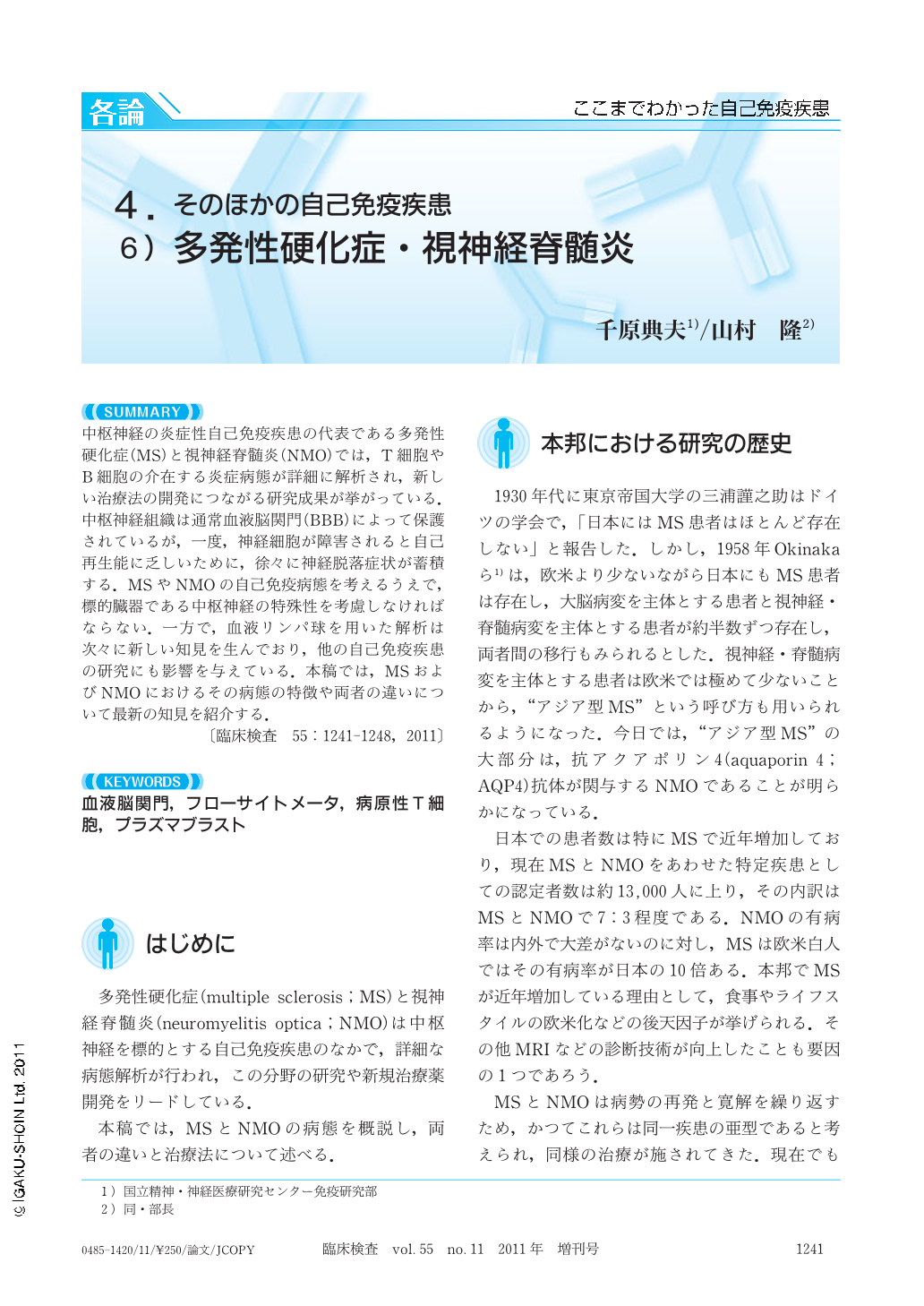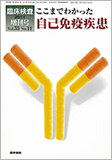Japanese
English
- 有料閲覧
- Abstract 文献概要
- 1ページ目 Look Inside
- 参考文献 Reference
中枢神経の炎症性自己免疫疾患の代表である多発性硬化症(MS)と視神経脊髄炎(NMO)では,T細胞やB細胞の介在する炎症病態が詳細に解析され,新しい治療法の開発につながる研究成果が挙がっている.中枢神経組織は通常血液脳関門(BBB)によって保護されているが,一度,神経細胞が障害されると自己再生能に乏しいために,徐々に神経脱落症状が蓄積する.MSやNMOの自己免疫病態を考えるうえで,標的臓器である中枢神経の特殊性を考慮しなければならない.一方で,血液リンパ球を用いた解析は次々に新しい知見を生んでおり,他の自己免疫疾患の研究にも影響を与えている.本稿では,MSおよびNMOにおけるその病態の特徴や両者の違いについて最新の知見を紹介する.
Multiple Sclerosis (MS) and neuromyeltis Optica (NMO) are autoimune neuroinflammatory diseases affecting the central nervous system (CNS). In MS and NMO, the inflammatory pathogenesis mediated by T or B lymphocytes has been intensively investigated, which research has opened the gate to the designing of new treatments. The CNS is a unique organ for which the blood brain barrier serves as a protective barrier preventing the entry of pathogenic lymphocytes. However, because of the low regenerative potential of neuronal cells following severe inflammation, defects in neuronal structure and functions tend to accumulate over the years. Here we describe the differences in the pathogenesis of MS and NMO based on recent progress in this research field.

Copyright © 2011, Igaku-Shoin Ltd. All rights reserved.


